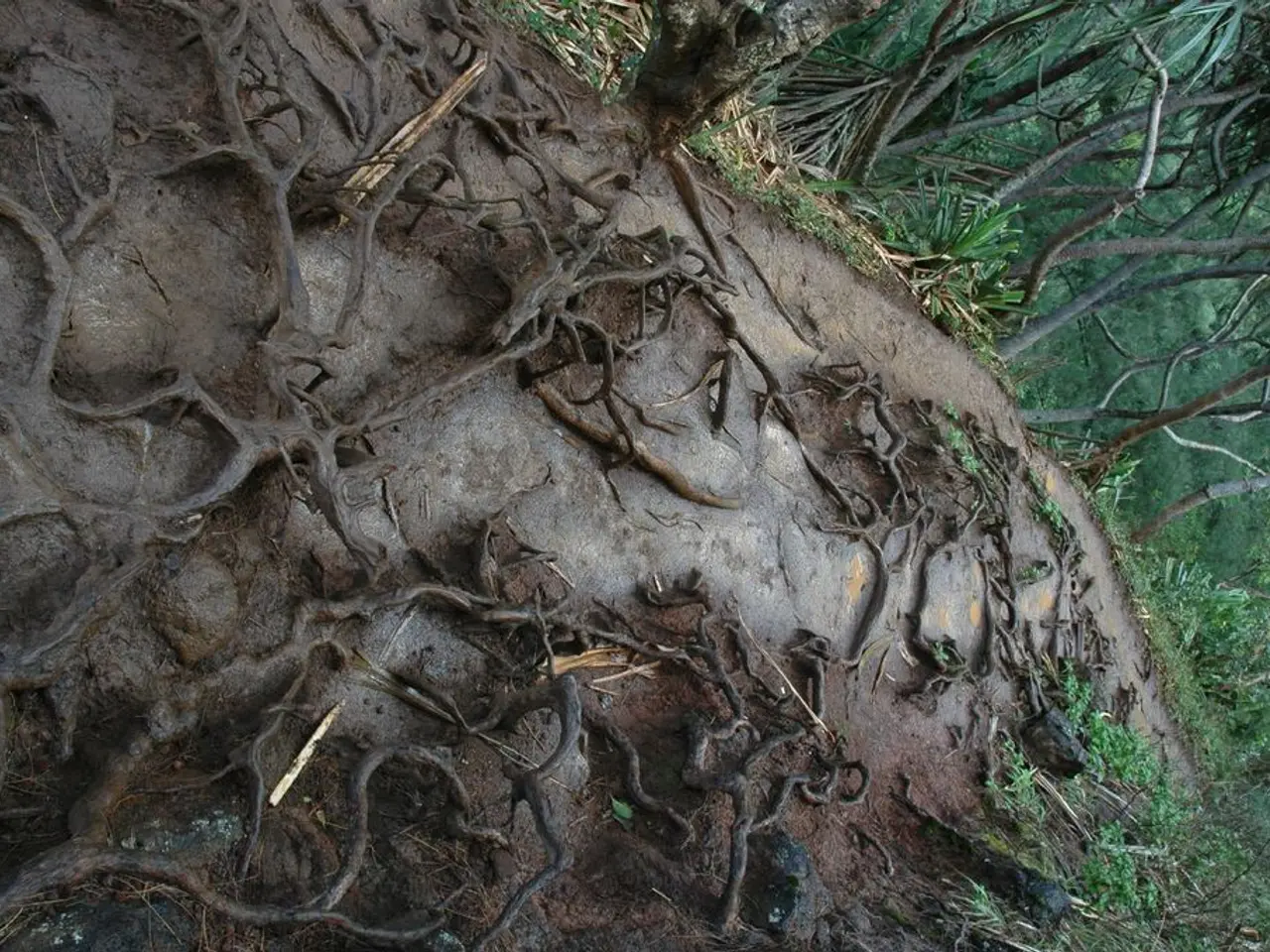Firm Grip of Earth: Keeping Vegetation Firmly Rooted
**Uncovering the Complexity of Plant Root Systems**
Plants, often perceived as stationary organisms, have a hidden world beneath the surface – their root systems. These intricate networks play a crucial role in plant growth and survival, serving as the primary means of anchorage, water and nutrient absorption, and sometimes storage of food.
Three main types of root systems can be found in plants: taproot systems, fibrous root systems, and adventitious root systems.
**Taproot Systems**
The taproot system, common in dicots like dandelions (*Taraxacum officinale*), consists of a single, well-developed primary root that grows vertically downward. It produces secondary and tertiary roots in a hierarchical manner. Taproots provide deep anchorage and are often deep feeders, accessing water and nutrients deep in the soil. They can also serve as storage organs for food.
**Fibrous Root Systems**
In contrast, fibrous root systems, common in monocots like wheat and lawn grasses, lack a single prominent taproot. Instead, they consist of a mass of thin, thread-like roots that spread out from the base of the stem. These roots are generally shallow and serve as surface feeders, absorbing water and nutrients from the top layers of the soil. They provide support and can be effective in unstable or shifting soils.
**Adventitious Root Systems**
Adventitious roots arise from any part of the plant other than the primary root, often from the stem. They can form a mix of deep and shallow roots depending on the plant's needs. These roots can replace or supplement the primary root system, providing additional support and nutrient absorption. They are common in epiphytes and some aquatic plants.
Besides these main types, there are specialized root forms that have evolved to adapt to specific environments, enhancing plant survival. For example, mushroom-shaped roots, as seen in plants like clover (*Trifolium trichocephalum*), have upper laterals that spread widely and taproots that extend downward.
The root cortex serves as a storage area for carbohydrates and other nutrients and facilitates the transport of water and nutrients from the root hairs to the vascular system. The rhizosphere, the area around the roots, is an intricate ecosystem inhabited by diverse organisms.
The roots of a plant provide structural support, keeping it upright. Roots can grow up to four times as much space as the plant itself, providing a stable base for the plant. There is a symbiotic relationship between roots and soil, where roots provide anchorage and support, while the soil provides water, nutrients, and a medium for growth.
Arbuscular mycorrhiza, a mutualistic symbiont, provides plants with water, nutrients, and pathogen protection. The vascular system, composed of xylem and phloem tissues, is responsible for transporting water, nutrients, and photosynthates throughout the plant.
Microorganisms in the soil contribute to its richness by adding minerals through their microbial actions. Saprophytic microorganisms are known for their ability to fix nitrogen and phosphorus, supporting plant development. The rhizosphere microbiome enhances plant growth and development by producing phytohormones and protecting against pathogens.
Roots help hold the soil together, preventing erosion. Root hairs, small hair-like extensions of root epidermal cells, increase the surface area for absorption, enhancing the plant's ability to absorb water and nutrients. The root cap produces mucilage, a lubricating substance that facilitates the movement of roots through the soil.
In conclusion, the complex world of plant root systems is a testament to nature's adaptability and the intricate relationships between plants and their environment. Understanding these systems can provide valuable insights into plant biology and ecology, as well as potential applications in agriculture and conservation.
The complexity of plant root systems, including taproot, fibrous root, and adventitious root systems, is interconnected with the science of soil health, as these intricate networks serve as anchorage, water and nutrient absorption, and sometimes storage of food. Meanwhile, the health-and-wellness benefits of these systems extend beyond plants, as the rhizosphere, the area around plant roots, is an intricate ecosystem that hosts diverse microorganisms contributing to soil richness and supporting plant growth and development. Moreover, the fitness-and-exercise aspect can be seen in the ability of roots to grow up to four times as much space as the plant, providing a stable base for the plant, and the nutritional value lies in the symbiotic relationship between roots and soil, where roots provide anchorage and support, while the soil provides water, nutrients, and a medium for growth.






